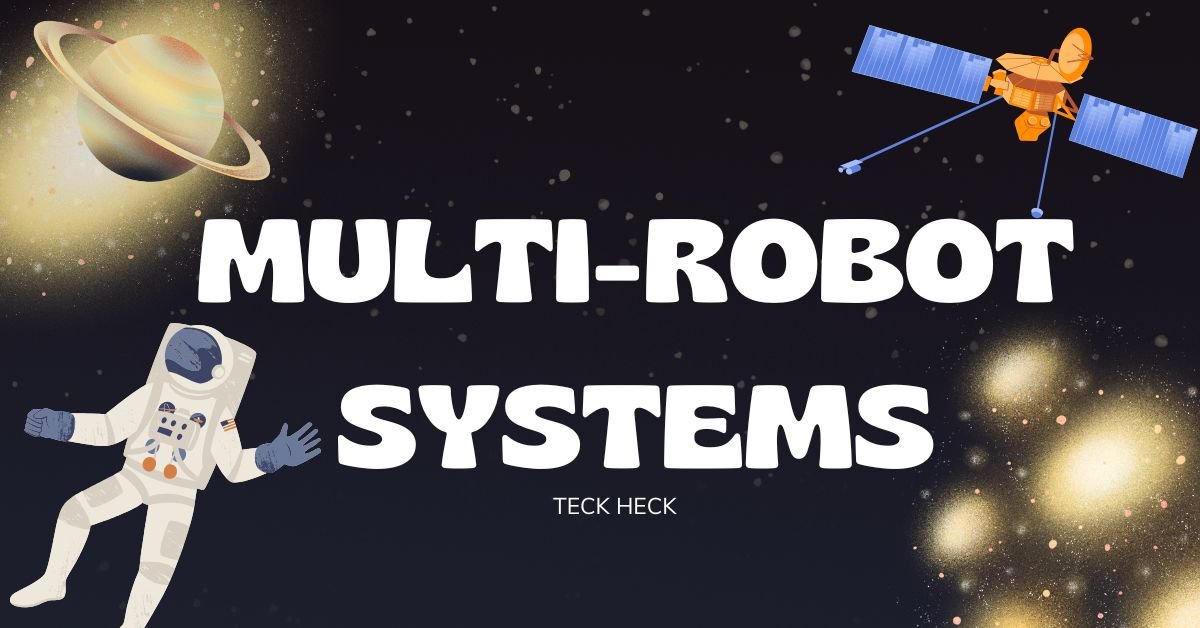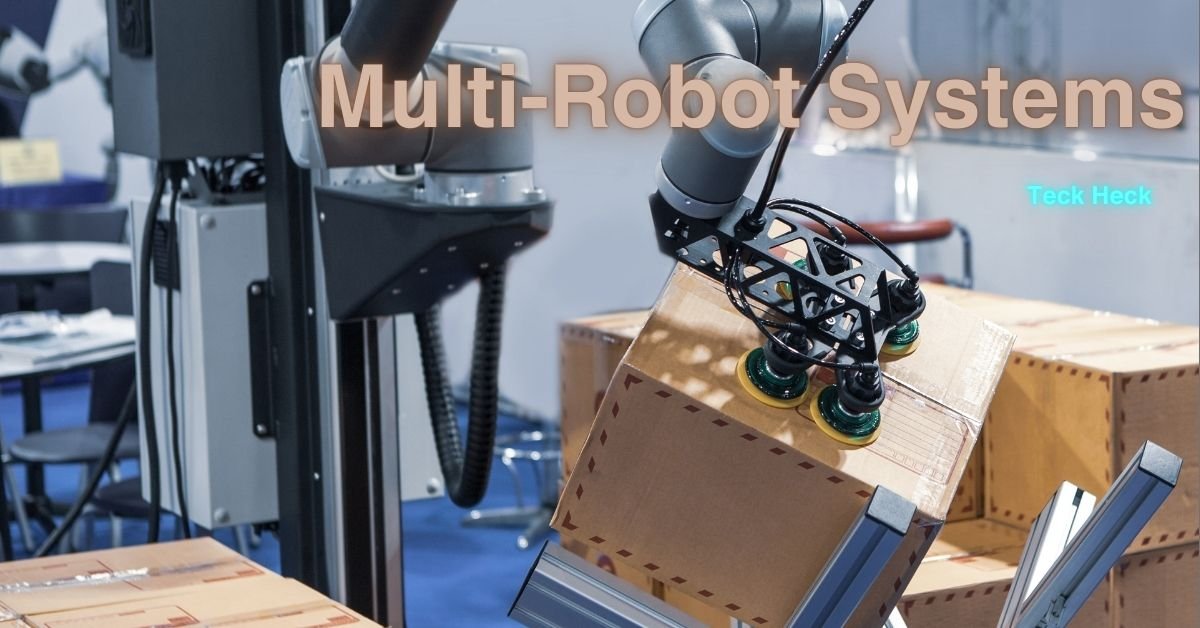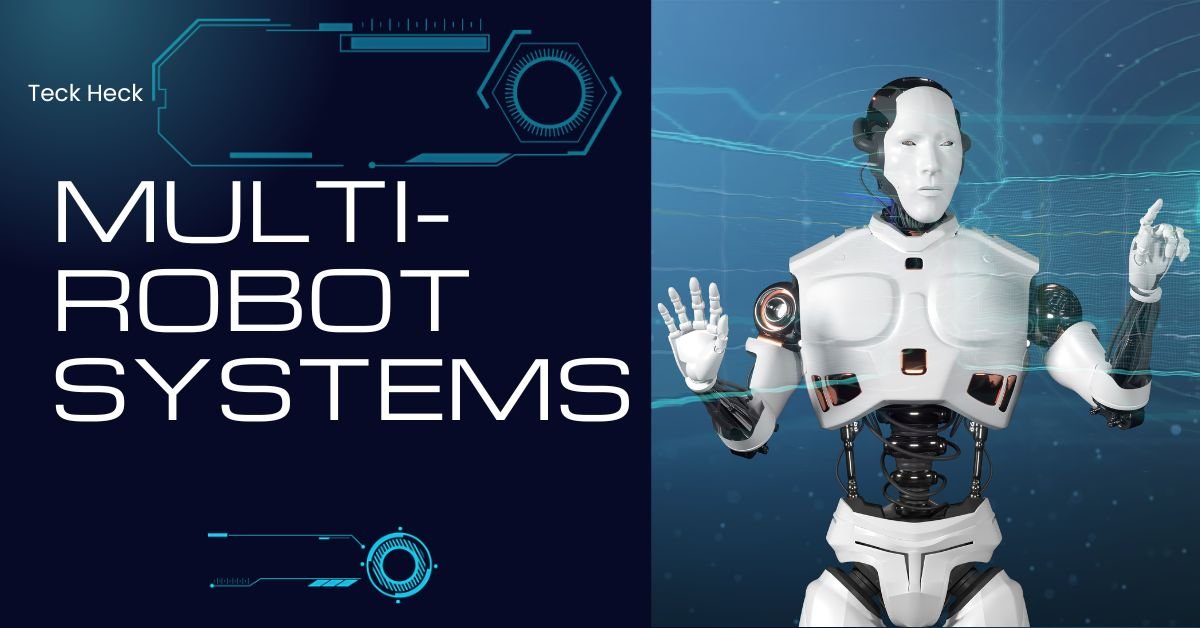
Multi-Robot Systems: Progress, Uses, and Difficulties
When several autonomous robots cooperate to complete a task or series of tasks, this is referred to as a multi-robot system (MRS). These systems have a lot to offer in terms of efficiency, resilience, adaptability, and scalability. MRS is able to address complicated issues that would be impossible or very difficult for a single robot to handle by utilizing the combined strengths of several robots.
Communication protocols that enable robots to exchange information, such as sensor data, task status, and ambient conditions, are essential components of multi-robot systems. The system design determines whether communication is decentralized or centralized.
Coordination and Cooperation: The ability of robots to cooperate, frequently through task distribution or coordinated actions, is a key component of MRS. Algorithms for coordination make guarantee that robots don’t interfere with or repeat tasks. Swarm intelligence, task assignment algorithms, and leader-follower models may all be used in this.

Sensing and Perception: To collect information about its surroundings, each robot in an MRS usually has sensors like cameras, LiDAR, or ultrasonic sensors. Robots must coordinate these senses in order to work together efficiently and have precise situational awareness.
Control and Navigation: Robust control systems, like decentralized controllers or path-planning algorithms, are necessary for multi-robot systems to navigate and carry out tasks smoothly. When robots are operating in shared areas, path planning and collision avoidance are crucial.
Uses for Multiple Robotic Systems
Numerous sectors have adopted multi-robot systems because they provide distinct benefits over single-robot systems. Among the noteworthy applications are:
Search and Rescue: Multiple robots can work together to find survivors, evaluate damage, and map the region in dangerous settings like disaster areas. The robots’ ability to operate independently allows them to avoid obstructions and conduct quicker, more comprehensive searches.
Industrial Automation: Multi-robot systems can be utilized for material handling, assembly and quality control in manufacturing and warehouse settings. Together, these robots maximize production processes, boost efficiency, and guarantee increased accuracy.
Agriculture: Robots can be used in agricultural environments to do duties including planting, harvesting, and crop monitoring.
Larger regions can be covered more effectively by multi-robot systems, allowing precision agriculture methods to increase yields while using fewer resources.
Environmental Monitoring: A fleet of robots is capable of keeping an eye on broad environmental issues like pollution, climate change, and wildlife tracking. It becomes possible to conduct thorough surveillance over large areas when numerous robots gather and exchange data.
Military & Defense: MRS can be utilized for logistical assistance, monitoring, and reconnaissance in military applications. Multiple robots can work together to complete difficult missions, share intelligence, and cover more terrain.
Multi-Robot System Difficulties
Even with all of the benefits, multi-robot system design and operation present some difficulties:
Scalability: Coordinating, communicating, and allocating tasks becomes more difficult as the number of robots rises.
One of the biggest challenges is ensuring efficient performance with an expanding fleet of robots.

Synchronization: Keeping all robots in the system in sync and ensuring that they have access to the most recent information is essential for effective teamwork, which calls for high-bandwidth, low-latency communication networks. Fault Tolerance: One of the main challenges is making sure the system can handle robot failures without jeopardizing the overall mission; strategies like redundancy and fault recovery mechanisms are needed to handle unforeseen problems. Resource Allocation: As the number of robots increases, it becomes more difficult to allocate resources, such as power, sensors and computational capacity. Optimal resource management is necessary to guarantee each robot functions as efficiently possible.
Ethical and Safety Issues: In applications like autonomous defense or surveillance, there are ethical concerns about the use of multi-robot systems. It is important to ensure that robots operate safely in human environments, especially when they make decisions on their own. Future Directions The future of multi-robot systems is bright, with advances in robotics, AI, and machine learning contributing to the increasing sophistication of MRS. Some emerging trends include: Swarm Robotics: Inspired by nature, swarm robotics focuses on large numbers of simple robots that can collectively solve complex problems, emphasizing robustness, scalability, and efficiency by imitating the behavior of social animals like ants or bees.
Autonomous Collaboration: Robots are now able to plan and adjust to changing circumstances on their own thanks to AI-based algorithms for work distribution, coordination, and decision-making. These systems will get more adaptable and efficient, enabling them to manage missions that get more complicated.
Human-Robot Teams: In the future of multi-robot systems, humans and robots may work together more closely, with humans handling oversight and strategic decision-making while robots help with jobs that call for strength, intellect or precision that are beyond human capabilities.
Edge Computing and Cloud Integration: As robots get more powerful, they will be able to work together and make decisions more quickly by combining edge computing, which processes data locally, with cloud computing, which stores and processes data remotely.
In conclusion:
Multi-robot systems are a game-changer for a variety of industries, including military, agricultural and search and rescue. Multi-robot systems are becoming more dependable, efficient, and intelligent as a result of continuous research and technical developments that are tackling issues like scalability, coordination and synchronization. These technologies will progressively make it possible to carry out intricate operations, increase productivity and provide new opportunities as they develop.
A group of autonomous robots that cooperate to accomplish a shared objective or carry out difficult activities that are difficult for a single robot to complete is known as a multi-robot system (MRS). Compared to single-robot systems, these systems employ collaboration, coordination, and communication to do tasks more quickly, boost redundancy and offer more flexibility. In a variety of domains, including as industrial automation, search and rescue, environmental monitoring, and agriculture, MRS are becoming more and more significant.
Important Ideas in Coordinating Multi-Robot Systems: Coordination is the ability of robots to cooperate, share tasks, and steer clear of duplication or conflict. This can include synchronization (keeping robots in sync for shared objectives) path planning (ensuring robots navigate efficiently and prevent collisions), and job allocation (assigning duties to individual robots).





